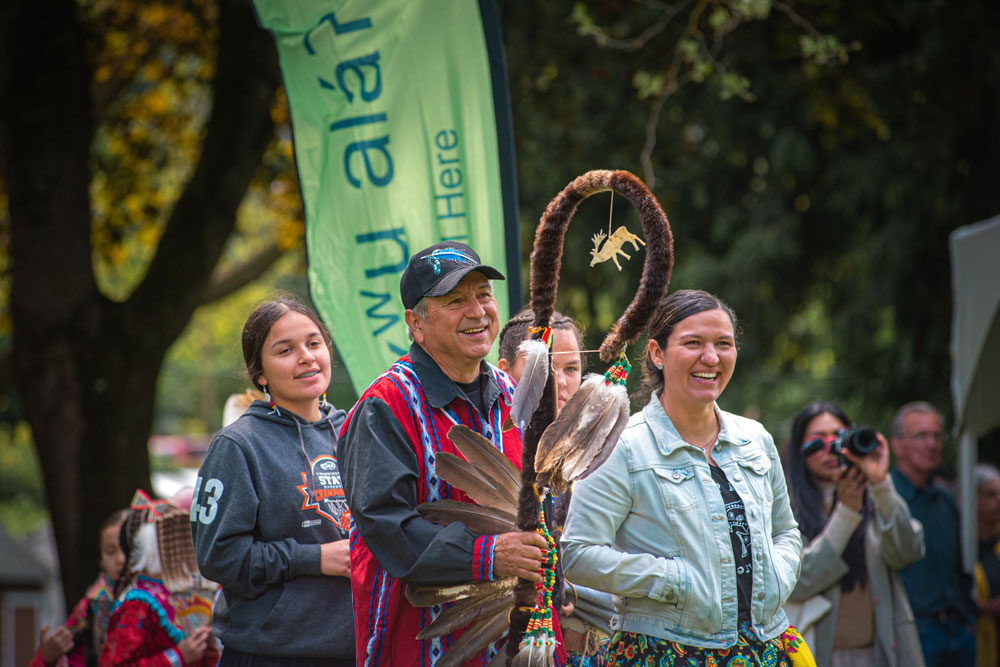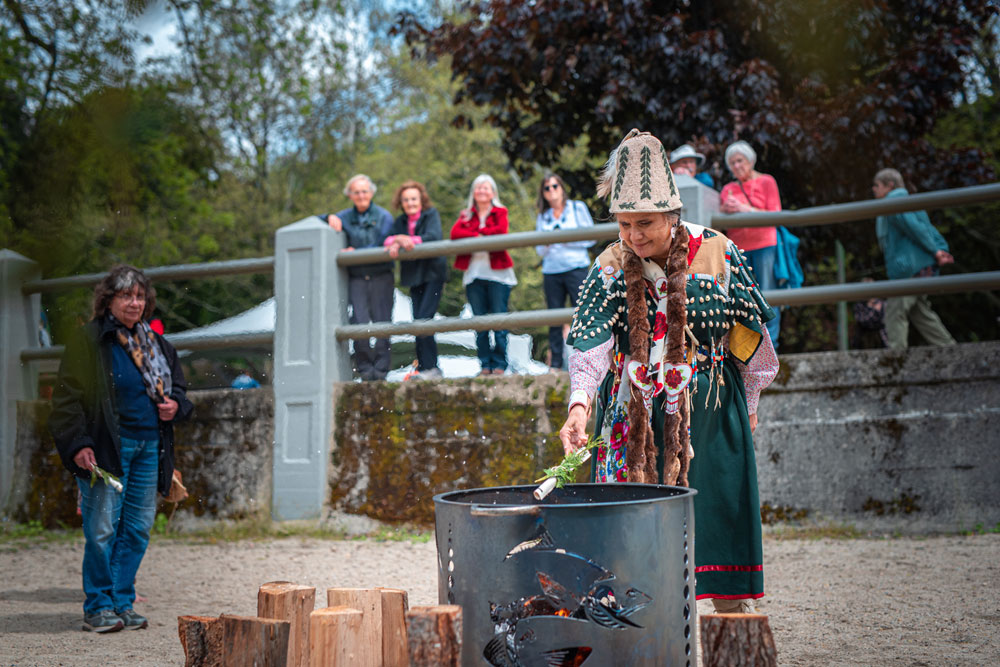“We are Not Extinct” – Displacement of the Sinixt
Eileen Pearkes Interview – Sinixt Displacement (captions available in both French and English). Enjoy this video with an English transcript.
The displacement of the Sinixt from their traditional territory happened by degrees.
It started with the decimation of the Sinixt through the introduction of smallpox from nations that they traded with, nations that had already had contact with Europeans, who brought the disease into their midst between 1770 – 1800.
It continued with the arrival of David Thompson, who completed his mapping and exploration of the Columbia River in 1811, opening up fur trade. The traders began to shift the traditional movement of the Sinixt, encouraging them to spend more time around Fort Colville, in the southern reach of their territory.
The setting of an artificial border between Canada and the US in 1846 made free movement of the Sinixt more difficult. The Sinixt were included in the 12 tribes of the Confederated Colville Reservation in Washington State in the 1870s.
When settlers established Revelstoke in 1885, they saw the Sinixt continuing to come north to fish, hunt and gather food, but did not recognize their rights, calling them “Colville Indians,” and stating that they should be banned from entering Canada.
The government denied the Sinixt adequate reserve land in Canada.
Their displacement was formalized in 1956, when the government of Canada declared them extinct for purposes of the Indian Act in Canada. By the time the Hugh Keenleyside Dam was built in the 1960s, the Sinixt had already been displaced from the valley, but the loss of former village sites and burial sites under the waters of the dam still affected them.
Shelly Boyd Interview – Displacement (captions available in both French and English). Enjoy this video with an English transcript.

Richard Desautel, whose actions triggered the Supreme Court decision on the SInixt, with granddaughter and daughter in Nelson, B.C., June 2022. Photographer: Mike Graeme.
After many years of effort, the Sinixt won a landmark Supreme Court of Canada case in 2021 affirming that the Sinixt are Indigenous people of Canada.
Their struggle for recognition is not over. Thousands of Sinixt people still live in the United States, while hundreds of others inter-married into other nations. They never lost their connection to the land, and to the river. The Sinixt are not, and never have been extinct.

Shelly Boyd, Sinixt/Arrow Lakes facilitator, burns a copy of the 1956 papers declaring the Sinixt extinct at a ceremony at Nelson, B.C., June 2022. Photographer: Mike Graeme.

